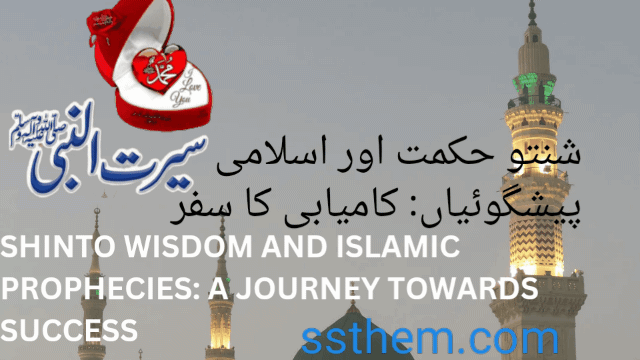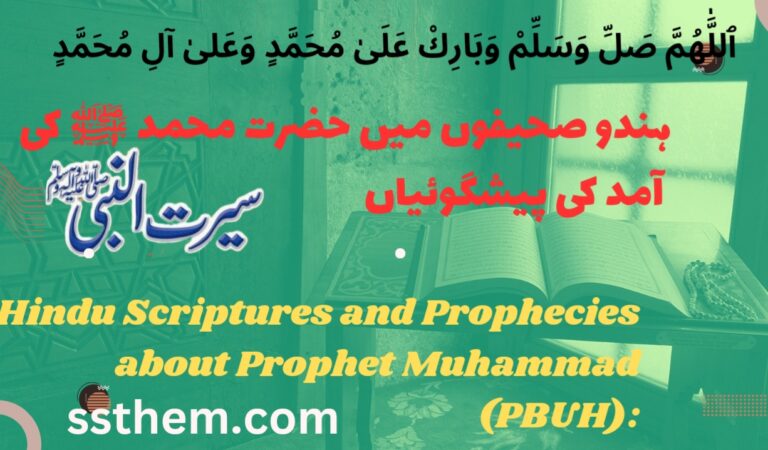🕉️ ہندومت کیا ہے؟ What is Hinduism?
ہندومت دنیا کا سب سے قدیم اور تیسرا بڑا مذہب ہے، جس کے ماننے والے ایک ارب سے زیادہ ہیں۔ یہ مذہب صرف عبادت یا رسومات کا مجموعہ نہیں بلکہ ایک مکمل طرزِ زندگی ہے جو انسان، کائنات، اور روحانیت کے باہمی رشتے کو سمجھاتا ہے۔
Hinduism is the world’s oldest and the third-largest religion, followed by over a billion people worldwide. It is not just a collection of rituals but a complete way of life that explains the relationship between humans, the universe, and spirituality.
ہندومت کو “سناتن دھرم” بھی کہا جاتا ہے، جس کا مطلب ہے “ازلی قانون” یا “ہمیشہ سے موجود راستہ”۔ اس کے ماننے والے یقین رکھتے ہیں کہ سچ، نیکی، اور کرم (اعمال) ہی انسان کی اصل پہچان ہیں۔
Hinduism is also known as Sanatan Dharma, which means “the eternal way” or “the timeless path.” Followers believe that truth, virtue, and karma (actions) define the real essence of human life.
یہ مذہب کسی ایک بانی یا نبی سے منسلک نہیں بلکہ صدیوں کے تجربات، عقائد، اور فلسفوں کے امتزاج سے وجود میں آیا۔ ہندو مذہب میں ہزاروں دیوتا ہیں، مگر یہ دراصل ایک ہی اعلیٰ قوت، “برہمن” (Brahman)، کی مختلف صورتوں کو مانتے ہیں۔
Unlike other religions, Hinduism has no single founder or prophet; it evolved through centuries of experiences, beliefs, and philosophies. Though it includes thousands of deities, all represent one supreme divine power — Brahman.
ہندو مذہب کا بنیادی عقیدہ کرما (عمل کا نتیجہ) اور پُنر جنم (روح کا دوبارہ جنم) ہے۔ اس کے مطابق انسان کے اچھے یا برے اعمال اس کی آئندہ زندگی کا فیصلہ کرتے ہیں۔
The core principles of Hinduism are karma (law of action and consequence) and reincarnation (rebirth of the soul). According to this belief, one’s deeds determine their future existence.
ہندومت کی تاریخ History of Hinduism
ہندومت کی تاریخ تقریباً 4000 قبل مسیح سے شروع ہوتی ہے، جب وادیٔ سندھ کی تہذیب (Indus Valley Civilization) میں مذہبی عقائد اور رسومات کی ابتدا ہوئی۔
The history of Hinduism dates back to around 4000 BCE, originating in the Indus Valley Civilization where early religious practices and rituals began to form.
بعد میں آریاؤں کے دور (1500 قبل مسیح) میں مذہب کی بنیاد “وید” (Vedas) پر رکھی گئی۔ یہ الہامی کتابیں ہندو فلسفے، منتر، اور رسومات کا اولین ذریعہ ہیں۔
Later, during the Aryan period (around 1500 BCE), the foundation of Hinduism was established through the Vedas — sacred texts that contain hymns, rituals, and philosophical teachings.
وقت گزرنے کے ساتھ، ویدی دور کے بعد برہمنیت (Brahmanism) کا زمانہ آیا جس میں پجاریوں اور رسومات کا کردار نمایاں ہوا۔ اس کے بعد اُپنشدی دور آیا جس نے روحانیت، یوگا، اور مراقبے کو مذہب کا مرکزی حصہ بنایا۔
Over time, the Vedic period was followed by the Brahmanical age, emphasizing priests and rituals. Later came the Upanishadic period, which introduced spirituality, meditation, and philosophical understanding as the core of faith.
پھر رامائن اور مہابھارت جیسے رزمیہ داستانوں نے ہندو ثقافت، اخلاقیات، اور دیوتاؤں کی اہمیت کو عام کیا۔ ان کے بعد ہندو مت نے بدھ مت اور جین مت جیسے مذاہب پر بھی گہرا اثر ڈالا۔
Later, epics like Ramayana and Mahabharata spread moral teachings and stories of gods across India. Hinduism also deeply influenced other religions like Buddhism and Jainism.
قرونِ وسطیٰ میں بھکتی تحریک (Bhakti Movement) نے ہندو مت کو مزید انسانی اور روحانی شکل دی، جس میں عقیدت، محبت، اور ذات پات کے نظام کے خلاف پیغام دیا گیا۔
During the medieval period, the Bhakti Movement reshaped Hinduism into a more emotional and personal faith, promoting devotion, love, and equality against the caste system.
آج ہندومت دنیا کے ہر حصے میں موجود ہے۔ اس نے آرٹ، فلسفہ، موسیقی، یوگا، اور سائنس پر گہرے اثرات چھوڑے ہیں، اور اسے روحانیت کی سب سے قدیم روایت سمجھا جاتا ہے۔
Today, Hinduism exists across the globe, influencing art, philosophy, music, yoga, and even modern science — remaining one of the world’s most ancient and profound spiritual traditions.
📚 ہندومت کی مقدس کتابیں Holy Books of Hinduism
ہندومت دنیا کا سب سے قدیم مذہب ہے، اور اس کے پاس مذہبی کتابوں کا سب سے بڑا ذخیرہ بھی موجود ہے۔ ان کتابوں میں مذہبی عقائد، فلسفہ، عبادت، اخلاقیات، اور روحانیت کے اصول بیان کیے گئے ہیں۔
Hinduism is the world’s oldest religion and also has one of the most extensive collections of sacred texts. These scriptures contain teachings about faith, philosophy, worship, ethics, and spirituality.
ہندو مذہب کی کتابیں دو اہم حصوں میں تقسیم کی جاتی ہیں:
Hindu scriptures are mainly divided into two broad categories:
श्रुति (Shruti) — “جو سنی گئی” یعنی الہامی کتابیں، جنہیں براہِ راست الوہی علم سمجھا جاتا ہے۔
Shruti — meaning “that which is heard,” referring to divine revelations or directly inspired scriptures.
स्मृति (Smriti) — “جو یاد رکھی گئی” یعنی وہ کتابیں جو انسانوں نے یادداشت اور روایت کے ذریعے محفوظ کیں۔
Smriti — meaning “that which is remembered,” referring to texts preserved by human memory and tradition.
🕉️ وید (Vedas)
The Vedas
وید ہندو مذہب کی سب سے قدیم اور مقدس ترین کتابیں ہیں۔ یہ سنسکرت زبان میں لکھی گئیں اور تقریباً 1500 سے 500 قبل مسیح کے درمیان مرتب ہوئیں۔ ان کا مطلب ہے “علم” یا “دانش”۔
The Vedas are the oldest and most sacred Hindu scriptures, written in Sanskrit between 1500 and 500 BCE. The word “Veda” means “knowledge” or “wisdom.”
چار وید ہیں، اور ہر ایک کا اپنا خاص مقصد اور تعلیم ہے:
There are four Vedas, each serving a specific purpose:
رِگ وید (Rigveda): منتر اور حمدوں پر مشتمل سب سے پرانی وید۔ اس میں تقریباً 1028 منتر شامل ہیں جو مختلف دیوتاؤں کے لیے ہیں۔
Rigveda: The oldest Veda containing 1,028 hymns dedicated to various deities like Agni (fire), Indra (rain), and Surya (sun).
سام وید (Samaveda): موسیقی اور گائیکی کے انداز میں مذہبی نغمے شامل ہیں۔
Samaveda: A collection of chants and melodies used in rituals; it forms the basis of Indian classical music.
یجُر وید (Yajurveda): پوجا اور قربانیوں کے طریقے بیان کرتی ہے۔
Yajurveda: Contains formulas and instructions for performing religious rituals and sacrifices.
اَتھرو وید (Atharvaveda): روزمرہ زندگی، صحت، اور جادوئی دعاؤں سے متعلق تعلیمات رکھتی ہے۔
Atharvaveda: Includes prayers, healing practices, and philosophical hymns for everyday life.
اُپنشَد (Upanishads)
The Upanishads
اُپنشَد ویدوں کے آخری حصے ہیں، جو روحانیت، فلسفہ، اور حقیقتِ کائنات کی گہرائی کو بیان کرتے ہیں۔ لفظ “اُپنشَد” کا مطلب ہے “قریب بیٹھنا” یعنی شاگرد کا استاد کے قریب بیٹھ کر سچائی حاصل کرنا۔
The Upanishads are the concluding part of the Vedas, focusing on deep spirituality and the nature of existence. The word “Upanishad” means “to sit near,” symbolizing the disciple’s quest for truth from the teacher.
ان کتابوں میں دو بنیادی تصورات بیان کیے گئے ہیں:
They emphasize two major concepts:
- آتمان (Atman): انسان کی روح جو ابدی اور ناقابلِ فنا ہے۔
Atman: The eternal, indestructible soul within every being. - برہمن (Brahman): کائنات کی اصل حقیقت، ایک لامحدود طاقت جو ہر شے میں موجود ہے۔
Brahman: The ultimate, infinite reality that pervades the entire universe.
یہی فلسفہ ہندومت کے روحانی نظام کی بنیاد ہے۔
This philosophy forms the foundation of Hindu spirituality and meditation.
بھگوت گیتا (Bhagavad Gita)
The Bhagavad Gita
بھگوت گیتا ہندو مذہب کی سب سے مشہور اور روحانی کتاب ہے۔ یہ “مہابھارت” کا حصہ ہے اور کرشن جی کی ارجن کو دی گئی تعلیمات پر مشتمل ہے۔
The Bhagavad Gita is one of the most famous and spiritual texts in Hinduism. It is a part of the epic Mahabharata and contains the teachings of Lord Krishna to Arjuna.
گیتا میں زندگی، فرض، ایمان، اور نجات (Moksha) کے بارے میں گہرے فلسفیانہ خیالات بیان کیے گئے ہیں۔
The Gita discusses profound ideas about life, duty (dharma), faith, and liberation (moksha).
یہ کتاب انسان کو سکھاتی ہے کہ کیسے دنیاوی ذمہ داریوں کو نبھاتے ہوئے روحانی سکون حاصل کیا جا سکتا ہے۔
It teaches how to fulfill worldly duties while maintaining spiritual peace and detachment.
رامائن (Ramayana)
رامائن بھگوان رام، سیتا، اور راون کی کہانی پر مبنی رزمیہ کتاب ہے۔ یہ صرف مذہبی داستان نہیں بلکہ اخلاقی سبق بھی فراہم کرتی ہے۔
The Ramayana is an epic poem about Lord Rama, Sita, and Ravana. It is not just a story but also a moral and spiritual guide.
یہ کتاب وفاداری، فرض، خاندانی رشتوں، اور نیکی کی برائی پر فتح کی مثال پیش کرتی ہے۔
It symbolizes loyalty, duty, family values, and the triumph of good over evil.
مہابھارت (Mahabharata)
مہابھارت دنیا کا سب سے طویل رزمیہ ہے، جس میں 100,000 سے زیادہ اشعار ہیں۔ یہ کوروں اور پانڈووں کی جنگ کی کہانی بیان کرتا ہے۔
The Mahabharata is the world’s longest epic, consisting of over 100,000 verses, describing the war between the Kauravas and the Pandavas.
اس میں فلسفہ، اخلاقیات، انصاف، سیاست، اور روحانیت کے بے شمار اسباق شامل ہیں۔
It contains deep lessons about philosophy, ethics, justice, politics, and spirituality.
پران (Puranas)
پران کتابوں کا ایک مجموعہ ہے جو دیوتاؤں، آسمانی واقعات، اور کائنات کی تخلیق کی کہانیاں بیان کرتی ہیں۔
The Puranas are a collection of texts that narrate stories of gods, cosmic events, and the creation of the universe.
ان میں 18 بڑی پرانیں شامل ہیں، جیسے وشنو پران، شیو پران، اور دیوی بھاگوت پران۔
There are 18 major Puranas, including Vishnu Purana, Shiva Purana, and Devi Bhagavata Purana.
ہندومت کے مختلف گروہ Groups in Hinduism
ہندومت دنیا کا سب سے قدیم مذہب ہے جس میں مختلف عقائد، فلسفے اور عبادتی طریقے شامل ہیں۔ وقت کے ساتھ ساتھ یہ مذہب کئی مکاتبِ فکر اور گروہوں میں تقسیم ہو گیا۔
Hinduism is one of the oldest religions in the world, encompassing diverse beliefs, philosophies, and practices. Over time, it has evolved into several major sects and subgroups.
ان تمام گروہوں کا بنیادی مقصد موکشا (Moksha) یعنی نجات حاصل کرنا ہے، لیکن ان کے راستے اور عقائد مختلف ہیں۔
All these groups share a common goal — Moksha, or liberation from the cycle of birth and death — but they follow different spiritual paths to achieve it.
وشنو ازم (Vaishnavism)
وشنو ازم ہندومت کا سب سے بڑا اور مشہور گروہ ہے، جو بھگوان وشنو اور ان کے اوتاروں، خصوصاً رام اور کرشن، کی عبادت کرتا ہے۔
Vaishnavism is the largest and most popular sect of Hinduism, primarily devoted to Lord Vishnu and his incarnations, especially Rama and Krishna.
وشنو ازم کا عقیدہ ہے کہ وشنو کائنات کے محافظ ہیں، جو دنیا میں توازن قائم رکھنے کے لیے مختلف اوتار لیتے ہیں۔
Vaishnavites believe that Vishnu is the preserver of the universe who incarnates in various forms to restore cosmic balance.
یہ گروہ بھکتی یوگ (Bhakti Yoga) یعنی محبت اور عقیدت کے ذریعے خدا سے قربت حاصل کرنے پر زور دیتا ہے۔
This group emphasizes Bhakti Yoga, or the path of devotion and love toward God.
شیو ازم (Shaivism)
شیو ازم ہندو مذہب کا دوسرا بڑا گروہ ہے جو بھگوان شیو کی عبادت کرتا ہے، جو تخلیق، بقا اور فنا کے مالک مانے جاتے ہیں۔
Shaivism is another major sect that worships Lord Shiva, considered the god of creation, preservation, and destruction.
شیو ازم کے ماننے والے مراقبہ، یوگا، اور ریاضت کے ذریعے روحانی قوت حاصل کرنے کی کوشش کرتے ہیں۔
Followers of Shaivism seek spiritual power through meditation, yoga, and self-discipline.
یہ گروہ کاشمیر شیو ازم، تامِل شیو ازم اور لِنگایت ازم جیسے مختلف ذیلی مکاتب میں تقسیم ہے۔
Shaivism is further divided into sub-traditions like Kashmir Shaivism, Tamil Shaivism, and Lingayatism.
شکتی ازم (Shaktism)
شکتی ازم میں خدا کی مؤنث طاقت شکتی یا دیوی (Devi) کو سب سے بڑا مانا جاتا ہے۔
In Shaktism, the feminine divine power known as Shakti or Devi is regarded as the supreme being.
یہ عقیدہ رکھتا ہے کہ تمام کائنات دیوی کی توانائی سے وجود میں آئی ہے، اور اسی سے ہر چیز متحرک ہے۔
It believes that the entire universe originates from the energy of the Goddess, who sustains and governs all life.
شکتی ازم کی عبادت میں درگا, کالی, لکشمی, اور سراوتی جیسے دیویوں کا مرکزی کردار ہے۔
Major goddesses worshiped in Shaktism include Durga, Kali, Lakshmi, and Saraswati.
یہ گروہ روحانیت اور قوتِ نسوانی (feminine energy) کے توازن کو اہمیت دیتا ہے۔
Shaktism emphasizes the balance between spiritual power and feminine energy.
سمرتی ازم (Smartism)
سمرتی ازم ایک فلسفیانہ گروہ ہے جو ادویت ویدانت (Advaita Vedanta) کے اصولوں پر عمل کرتا ہے۔ اس کے ماننے والے خدا کو ایک ہی مانتے ہیں، مگر اسے مختلف دیوتاؤں کے ذریعے ظاہر سمجھتے ہیں۔
Smartism is a philosophical sect based on Advaita Vedanta, which teaches that God is one but can be worshipped in many forms.
سمرتی ازم میں وشنو، شیو، دیوی، گنیش، اور سورج کی یکساں عبادت کی جاتی ہے۔
Smartas worship Vishnu, Shiva, Devi, Ganesha, and Surya equally, considering them different aspects of the same divine truth.
یہ گروہ رواداری، علم، اور مراقبے کو نجات کا ذریعہ سمجھتا ہے۔
Smartism emphasizes tolerance, wisdom, and meditation as paths to liberation.
دیگر ذیلی فرقے Other Subgroups
وقت گزرنے کے ساتھ ہندومت میں کئی اور ذیلی گروہ بھی وجود میں آئے جیسے:
Over time, several other subgroups have emerged within Hinduism, such as:
- برہمو سماج (Brahmo Samaj): جدید تعلیم اور اصلاحی نظریات پر مبنی گروہ۔
Brahmo Samaj: A reformist movement promoting modern education and monotheism. - آریہ سماج (Arya Samaj): سوامی دیانند سرسوتی کی تحریک، جو ویدوں کی اصل تعلیمات پر واپسی کی بات کرتی ہے۔
Arya Samaj: Founded by Swami Dayananda Saraswati, emphasizing a return to the original teachings of the Vedas. - ISKCON (Hare Krishna Movement): بھگوان کرشن کے عقیدت مندوں کی عالمی تحریک۔
ISKCON (Hare Krishna Movement): A global movement dedicated to the devotion of Lord Krishna.
ہندومت کے مشہور تہوار Festivals in Hinduism
ہندومت دنیا کا سب سے قدیم مذہب ہے، اور اس کی خاص بات یہ ہے کہ اس میں سال بھر تہواروں کا سلسلہ جاری رہتا ہے۔ ہر تہوار ایک خاص عقیدہ، دیوتا، یا فلسفہ کی علامت ہوتا ہے۔
Hinduism is one of the world’s oldest religions, and it is known for its vibrant and colorful festivals celebrated throughout the year. Each festival represents a particular belief, deity, or spiritual idea.
یہ تہوار نہ صرف مذہبی عبادت کا ذریعہ ہیں بلکہ سماجی ہم آہنگی، محبت، اور خوشی کا پیغام بھی دیتے ہیں۔
These festivals are not only religious rituals but also promote social harmony, love, and joy among people.
دیوالی (Diwali)
Diwali – The Festival of Lights
دیوالی ہندومت کا سب سے مشہور اور روشن تہوار ہے۔ اسے “روشنیوں کا تہوار” بھی کہا جاتا ہے۔
Diwali is the most famous and celebrated Hindu festival, also known as the “Festival of Lights.”
یہ دن بھگوان رام کی ایودھیا واپسی کی یاد میں منایا جاتا ہے جب انہوں نے راون کو شکست دی۔
It commemorates the return of Lord Rama to Ayodhya after defeating Ravana.
لوگ اپنے گھروں کو دیوں، لائٹس، اور رنگولی سے سجاتے ہیں، پٹاخے چلاتے ہیں، اور لکشمی دیوی کی پوجا کرتے ہیں تاکہ خوشحالی حاصل ہو۔
People decorate their homes with lamps, lights, and rangoli, light fireworks, and worship Goddess Lakshmi for prosperity.
ہولی (Holi)
Holi – The Festival of Colors
ہولی خوشی، رنگوں، اور دوستی کا تہوار ہے۔ یہ بہار کے آغاز پر منایا جاتا ہے۔
Holi is the festival of colors, joy, and friendship, celebrated at the beginning of spring.
یہ تہوار پراہلاد اور ہولکا کی کہانی سے منسلک ہے، جو نیکی کی برائی پر فتح کی علامت ہے۔
It is linked to the legend of Prahlada and Holika, symbolizing the victory of good over evil.
لوگ ایک دوسرے پر رنگ پھینکتے ہیں، مٹھائیاں بانٹتے ہیں، اور گیت و رقص کرتے ہیں۔
People throw colors at each other, share sweets, and sing and dance joyfully.
ناوراتری اور درگا پوجا (Navratri & Durga Puja)
ناوراتری نو دنوں پر مشتمل تہوار ہے جو دیوی درگا کی فتح کی یاد میں منایا جاتا ہے۔
Navratri is a nine-day festival celebrating the victory of Goddess Durga over the demon Mahishasura.
ہندوستان کے مختلف حصوں میں اس تہوار کو مختلف انداز میں منایا جاتا ہے۔ بنگال میں اسے درگا پوجا کہا جاتا ہے، جہاں شاندار مجسمے بنائے جاتے ہیں۔
Across India, the festival takes different forms — in Bengal, it’s celebrated as Durga Puja, with grand idols and processions.
یہ تہوار عورت کی قوت، ایمان، اور نیکی کی جیت کی علامت ہے۔
It symbolizes feminine power, faith, and the triumph of virtue.
مکر سنکرانتی (Makar Sankranti)
Makar Sankranti – The Harvest Festival
یہ تہوار سورج کے مکر راشی (Capricorn) میں داخل ہونے پر منایا جاتا ہے۔
Makar Sankranti marks the transition of the sun into the zodiac sign of Capricorn.
یہ دن فصل کی کٹائی اور کسانوں کی خوشی کا دن سمجھا جاتا ہے۔
It is celebrated as a harvest festival, marking prosperity for farmers.
لوگ اس دن پتنگ بازی کرتے ہیں، میٹھے چاول اور تل کے لڈو کھاتے ہیں، اور سورج دیو کی پوجا کرتے ہیں۔
People fly kites, eat sweets made of sesame and jaggery, and worship the Sun God for blessings.
جنماشٹمی (Janmashtami)
Janmashtami – Birth of Lord Krishna
جنماشٹمی بھگوان کرشن کی پیدائش کے موقع پر منایا جاتا ہے۔
Janmashtami is celebrated to mark the birth of Lord Krishna, the eighth avatar of Vishnu.
لوگ روزہ رکھتے ہیں، مندر سجاتے ہیں، اور کرشن جی کی کہانیاں گاتے ہیں۔
Devotees fast, decorate temples, and sing devotional songs about Krishna’s life.
مشہور رسم دہی ہانڈی میں نوجوان مٹکے توڑ کر کرشن کی شرارتوں کی یاد تازہ کرتے ہیں۔
The popular ritual Dahi Handi involves breaking clay pots hung high, representing Krishna’s playful nature.
راکھی بندھن (Raksha Bandhan)
Raksha Bandhan – Bond of Protection
راکھی بندھن بہن بھائی کے رشتے کی محبت کا تہوار ہے۔
Raksha Bandhan celebrates the sacred bond between brothers and sisters.
بہن بھائی کی کلائی پر راکھی باندھتی ہے، اور بھائی بہن کی حفاظت کا وعدہ کرتا ہے۔
The sister ties a Rakhi (sacred thread) on her brother’s wrist, and he pledges to protect her.
یہ تہوار خاندانی پیار، احترام، اور یکجہتی کی علامت ہے۔
It symbolizes family love, respect, and unity.
اونم (Onam)
Onam – Festival of Kerala
اونم جنوبی بھارت کے ریاست کیرالا کا سب سے بڑا تہوار ہے، جو بادشاہ مہابلی کی یاد میں منایا جاتا ہے۔
Onam is the grandest festival of Kerala, celebrated in honor of King Mahabali.
یہ فصلوں کی خوشحالی، رقص، اور کشتی ریس (boat race) کے لیے مشہور ہے۔
It is known for its harvest celebrations, traditional dances, and boat races.
ہندومت اور دیگر مذاہب میں مماثلتیں اور اختلافات Similarities and Differences Between Hinduism and Other Religions
ہندومت دنیا کا سب سے پرانا مذہب مانا جاتا ہے، جس کی جڑیں ہزاروں سال قبل ویدک تہذیب سے ملتی ہیں۔ دنیا کے دوسرے بڑے مذاہب — اسلام، عیسائیت، بدھ مت، اور سکھ مت — بھی انسانیت، اخلاقیات، اور عبادت کے اصولوں پر زور دیتے ہیں۔
Hinduism is considered one of the world’s oldest religions, rooted in the ancient Vedic civilization. Other major religions such as Islam, Christianity, Buddhism, and Sikhism also emphasize humanity, morality, and devotion to God.
اگرچہ ان سب مذاہب کا بنیادی مقصد انسان کو سچائی، محبت، اور نیکی کی راہ دکھانا ہے، مگر ان کے عقائد اور عبادتی طریقے ایک دوسرے سے مختلف ہیں۔
While the ultimate goal of all these religions is to guide humanity toward truth, love, and righteousness, their beliefs and practices vary in many ways.
مماثلتیں (Similarities)
ایک اعلیٰ طاقت پر ایمان Belief in a Supreme Power
تقریباً تمام مذاہب، بشمول ہندومت، کسی نہ کسی اعلیٰ طاقت یا خدا کے وجود کو مانتے ہیں۔
Almost all religions, including Hinduism, acknowledge the existence of a Supreme Power or God.
ہندومت میں اگرچہ کئی دیوتاؤں کا ذکر ہے، مگر ان سب کی جڑ ایک ہی الہیٰ حقیقت برہمن (Brahman) ہے۔
In Hinduism, though there are many deities, they all represent one ultimate reality — Brahman.
اسلام، عیسائیت، اور یہودیت میں بھی ایک خدا پر ایمان رکھنے کا تصور بنیادی حیثیت رکھتا ہے۔
Similarly, Islam, Christianity, and Judaism emphasize monotheism — belief in one God.
عبادت اور دعا کی اہمیت Importance of Worship and Prayer
تمام مذاہب انسان کو عبادت، دعا، اور روحانی تعلق قائم رکھنے کی تلقین کرتے ہیں۔
All religions teach the importance of worship and maintaining a spiritual connection with the divine.
ہندومت میں پوجا، منتر، یوگ، اور میڈیٹیشن کا تصور ہے؛
اسلام میں نماز، دعا، اور روزہ؛
عیسائیت میں چرچ کی عبادت؛
اور بدھ مت میں مراقبہ روحانیت کی بنیاد ہیں۔
In Hinduism, worship (puja), mantras, yoga, and meditation are central;
in Islam — prayer (salat) and fasting;
in Christianity — church worship;
and in Buddhism — meditation forms the spiritual core.
نیکی، اخلاقیات، اور خدمتِ انسانیتGood Deeds, Morality, and Service to Humanity
ہر مذہب انسان کو اچھے اعمال، دیانت داری، اور دوسروں کی خدمت کی تعلیم دیتا ہے۔
Every religion encourages kindness, honesty, and service to humanity.
ہندومت میں “کرما” کا تصور یہی بتاتا ہے کہ انسان کے اعمال کا نتیجہ وہ خود بھگتتا ہے۔
Hinduism’s concept of Karma teaches that every action brings its own consequence.
اسلام میں “نیکی” اور “عدل”، عیسائیت میں “محبت اور قربانی”، اور بدھ مت میں “کرونا” (رحم) بنیادی اصول ہیں۔
In Islam — righteousness and justice; in Christianity — love and sacrifice; in Buddhism — Karuna (compassion) form the moral foundation.
اختلافات (Differences)
خدا کا تصور Concept of God
ہندومت میں خدا کو مختلف روپوں میں ظاہر کیا جاتا ہے، جیسے وشنو، شیو، لکشمی وغیرہ، مگر ان سب کا مقصد ایک ہی الہیٰ حقیقت کی نمائندگی ہے۔
In Hinduism, God manifests in many forms such as Vishnu, Shiva, and Lakshmi, all representing one divine essence.
جبکہ اسلام، عیسائیت، اور یہودیت میں ایک واحد خدا کی عبادت کی جاتی ہے۔
In contrast, Islam, Christianity, and Judaism emphasize one single God without form or division.
نجات کا راستہ Path to Salvation
ہندومت میں نجات (Moksha) حاصل کرنے کے چار راستے بتائے گئے ہیں:
کرما یوگ (عمل)، جنانی یوگ (علم)، بھکتی یوگ (عقیدت)، اور راجا یوگ (مراقبہ)۔
Hinduism teaches four paths to salvation — Karma Yoga (action), Jnana Yoga (knowledge), Bhakti Yoga (devotion), and Raja Yoga (meditation).
اسلام میں نجات ایمان، اعمالِ صالحہ، اور اللہ کی رحمت سے؛
عیسائیت میں مسیح پر ایمان سے؛
اور بدھ مت میں نروان (Nirvana) حاصل کرنے سے ممکن ہے۔
In Islam, salvation comes through faith, good deeds, and God’s mercy;
in Christianity, through faith in Christ;
and in Buddhism, through attaining Nirvana, freedom from desire and suffering.
آسمانی کتابوں کا تصور Concept of Holy Books
ہندومت کی مقدس کتابیں وید، اُپنشَد، گیتا، رامائن اور مہابھارت ہیں۔
Hinduism’s holy scriptures include the Vedas, Upanishads, Bhagavad Gita, Ramayana, and Mahabharata.
اسلام میں قرآن،
عیسائیت میں بائبل،
اور یہودیت میں تورات کو الہامی کتابیں مانا جاتا ہے۔
In Islam — the Qur’an,
in Christianity — the Bible,
and in Judaism — the Torah are considered divine revelations.
زندگی اور موت کا عقیدہ Belief about Life and Death
ہندومت میں آواگمن (Reincarnation) یعنی روح کے دوبارہ جنم لینے کا عقیدہ ہے، جو انسان کے کرما پر منحصر ہوتا ہے۔
Hinduism believes in Reincarnation, where the soul is reborn according to one’s karma.
اسلام، عیسائیت، اور یہودیت میں قیامت کے دن کا تصور ہے، جب انسان اپنے اعمال کا حساب دے گا۔
In Islam, Christianity, and Judaism, there is the belief in Judgment Day, when every soul is judged for its deeds.




